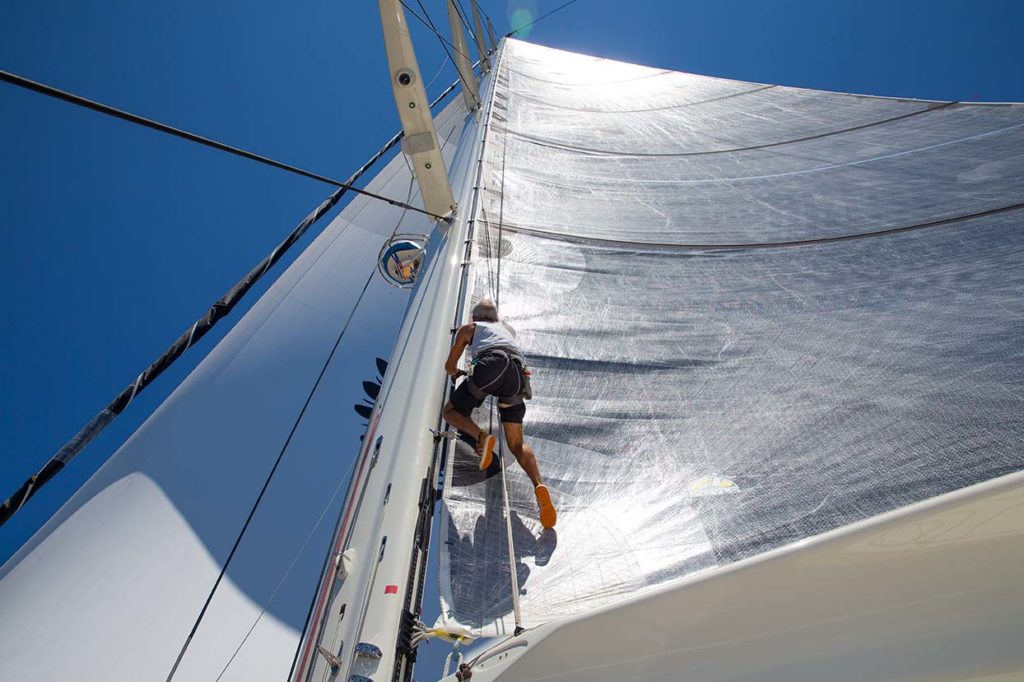
On a recent windy romp through the British Virgin Islands, I found myself aboard a 45-foot charter cat, caught up in one of those moments that fellow sailors know only too well: All was going perfectly until it wasn’t. One minute we were successfully shaking a reef out of the main in anticipation of a long reach down Sir Francis Drake Channel to the Bight on Norman Island, and the next, the reef lines were incredibly tangled and the flogging sail was stuck in the mast track, unable to go up and unwilling to come down.
Instantly, a relaxing afternoon voyage became a lot like work as I scrambled up onto the cabin top and climbed up mast steps, hanging on with one arm, and clawing frantically with a boat hook in the other to pull down the sail so we could straighten out the mess. A tense few minutes ended well enough, but it was a good reminder of the forces at play when wind—lots of it—meets boat.
The engineers at Harken had similar—though larger-scale—scenarios in mind back in the 1980s when they created the first Battcar System for use on supersize record-chasing multihulls. The solution: affix sections of tracks to the mast and install cars with ball bearings to replace the main’s sail slides. This let the crew manage the enormous spreads of battens and cloth used to drive the powerful cats.
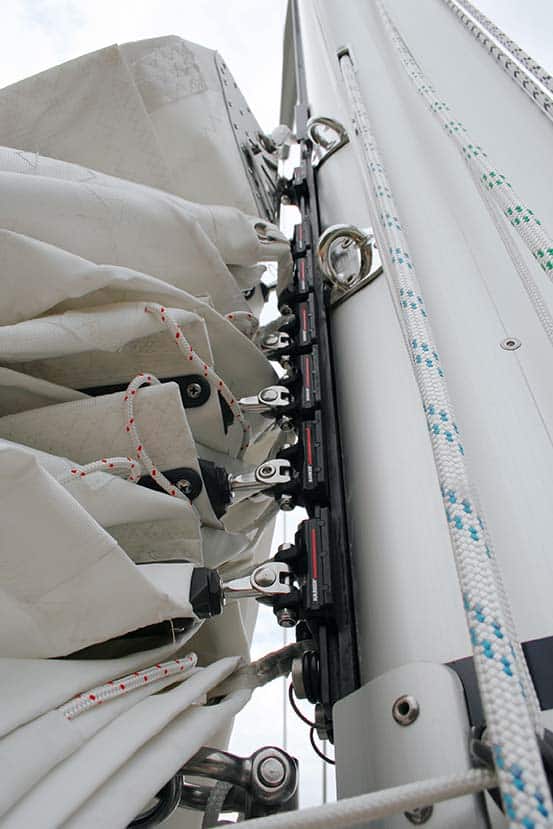
It didn’t take long for sailors aboard other top race boats to see the advantages of being able to safely raise and reef sails from the security of the cockpit, and today, Battcars are basic gear aboard pretty much all of the sailboats taking high-speed laps around the planet—or rounding the buoys in local waters, for that matter.
But what’s good for going fast can also be a welcome addition on cruising boats, where owners want to keep things safe and enjoyable, and where shorthanded crews might encounter a wide range of conditions to which they’ll need to react quickly.
There are other options, of course. Many boats today have in-mast furling, but their mainsails can’t carry battens and therefore have a hollow leach, which means less power. Or they rely on vertical battens that can be troublesome to remove should the sail need to come down in a hurry. In-boom furling is also available, and while these systems allow for full-cut sails with battens, they tend to be expensive, and they too require care when furling. And what do you do if you buy a boat without such systems?
Call me old-fashioned, but a traditional full-batten main not only looks good and performs well, but it also can be dropped easily—so long as you point the bow into the wind. Add a Battcar System, and it can be doused with control or reefed no matter the wind direction, thanks to the ball bearings in the cars that attach it to the mast.
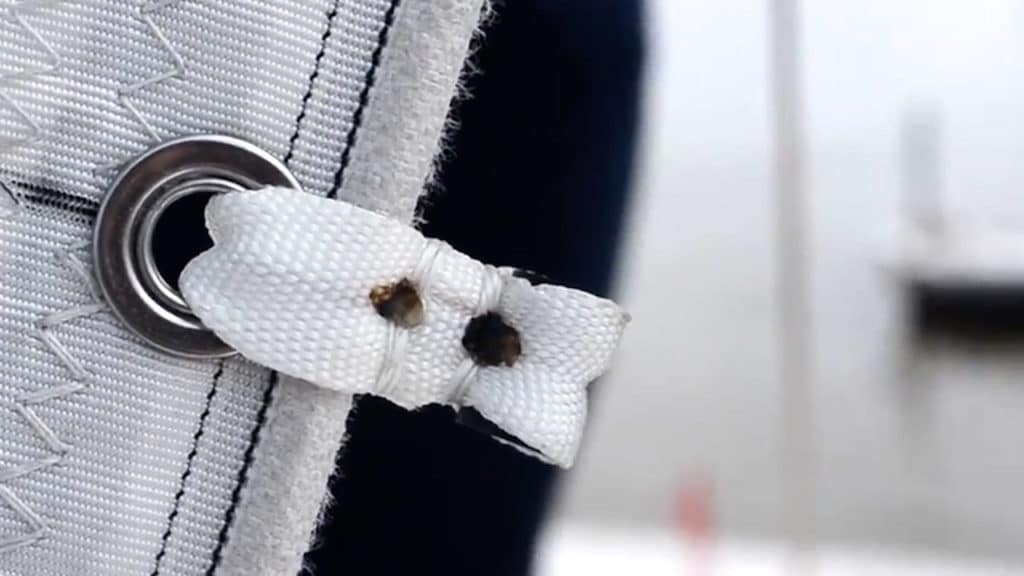
Harken has designed its systems so that retrofitting them is a relatively approachable project for the do-it-yourselfer, and one that will be a lot less costly than buying a new furling mast or boom.
Since their introduction in the 1980s, Harken’s Battcars have evolved, though the basic concept is pretty much the same. Ball-bearing cars are loaded onto a track that runs up the mast. Instead of a boltrope or slugs, the sail is attached to a vertical pin on each car with a loop of webbing sewn onto the luff. On early cars, a cotter pin or ring was used to secure each pin, but current design employs a pushpin that locks itself into place. Older cars also relied on end caps to secure the ball bearings, and if those caps were damaged, the bearings could come loose and quickly disappear overboard. To prevent this, Harken developed captive ball bearings that are locked into place with retaining rings that can’t accidentally come undone.
Harken initially offered three systems—dubbed A, B and C—for boats from 35 feet up to about 60 feet. They’ve since added an AA line for boats down to 21 feet, and custom Battcar systems are available for larger yachts of 100 feet and more.
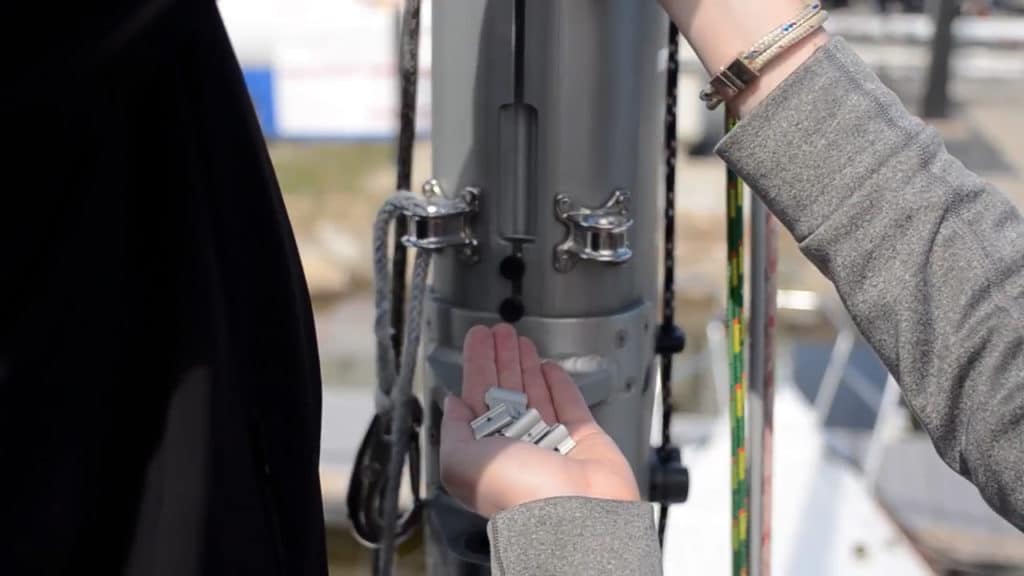
As a DIY refit project, installing the track appears fairly straightforward. On a smooth extrusion, holes can be drilled and tapped, and the track screwed into place. The ideal time to do this, of course, would be when the mast is down for winter storage, but it can also be done with the mast stepped, and in the case of a mast with a groove, it would require just one trip aloft using what Harken calls ‘Slug Track’ and a compliment of slugs. The required tools are fairly basic: hacksaw, file, drill and a couple of bits, Phillips head screwdriver, putty knife, crescent wrench, Allen wrenches, and a tape measure.
The slotted-mast installation kits include slugs that are fed into the sail slot. Then sections of the track get screwed loosely to the slugs and are pushed up the mast. The final piece of track gets cut to fit, and then an end piece is installed and tightened down. Once that’s done, someone takes a ride up the mast, tightening all the remaining screws as they go.
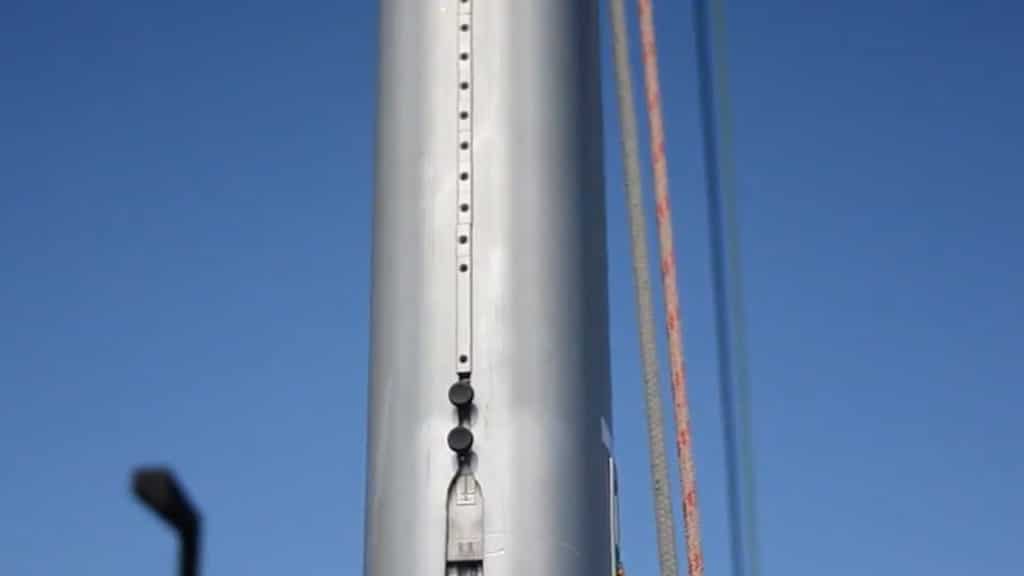
The system uses three different types of cars: one designed to hold the sail’s headboard, another to accommodate the battens, and intermediate luff cars that go between the batten cars. Installation-kit details are available in Harken’s online catalog. Select the number of cars and track sections you’ll need, install the track, slide on the cars, and you’re good to go.
To adapt a sail for the system, all that’s required is to have a sailmaker replace the existing slugs with loops of webbing to attach to the Battcars’ pins.
With lazy jacks installed, dousing the main, even when sailing downwind in breezy conditions, means just letting go with the halyard, and reefing can be done from the cockpit, meaning no one has to go forward on deck. Safe and simple, right?
To learn more about Harken’s Battcar System visit https://bit.ly/HarkenBattcarVideo








